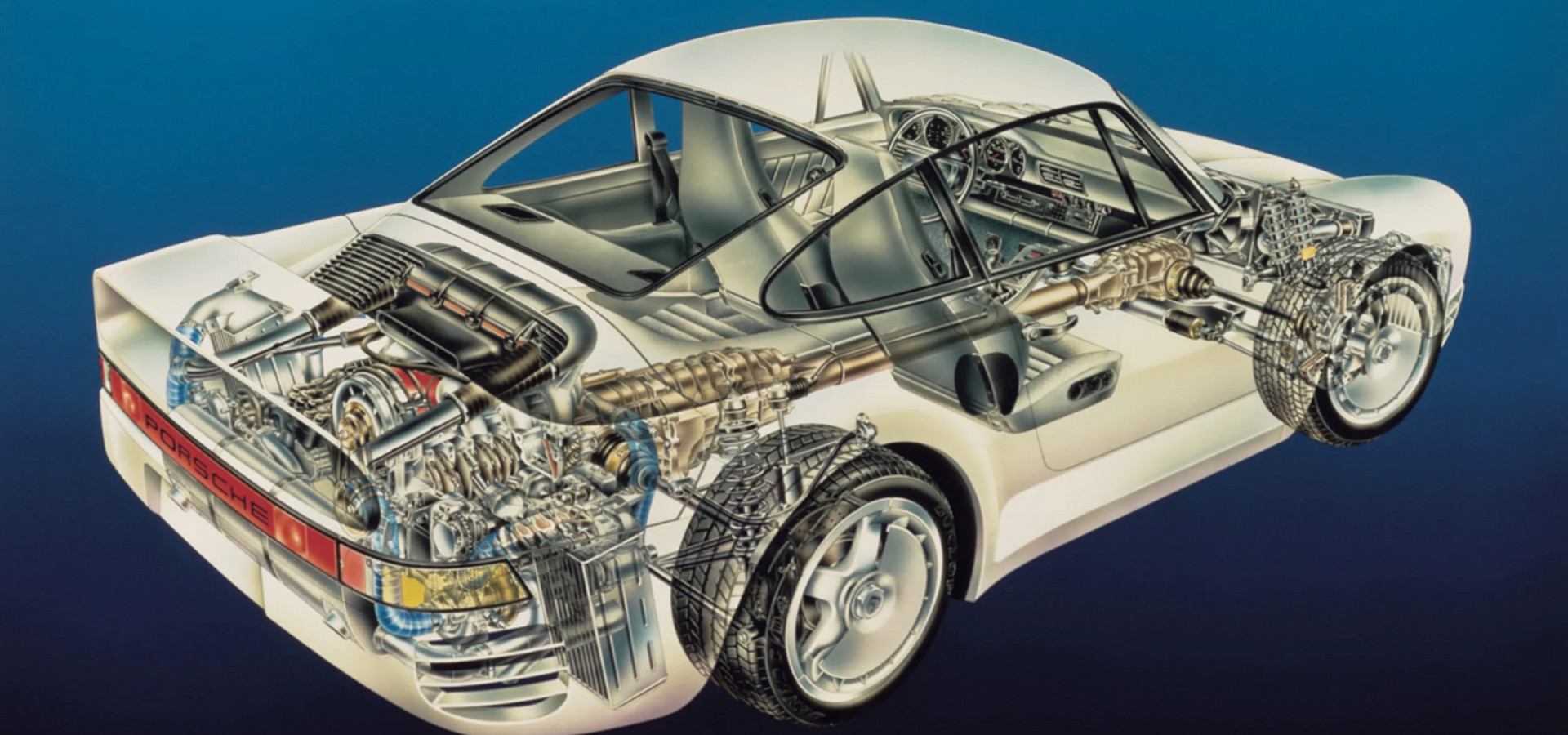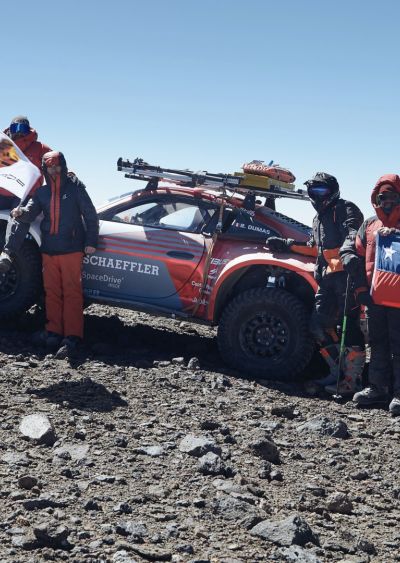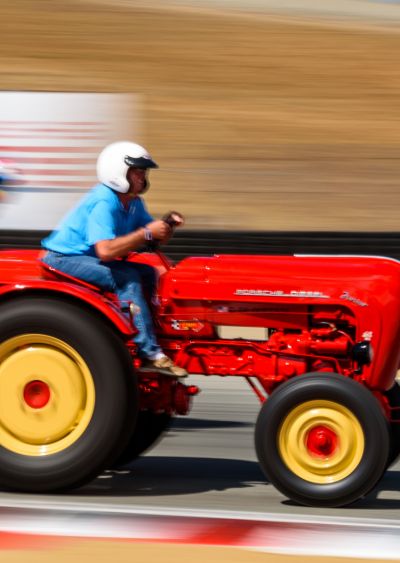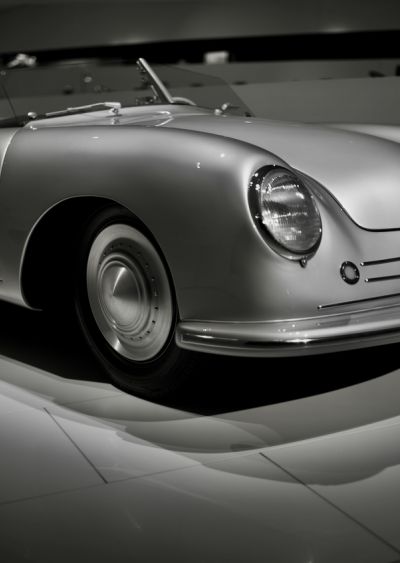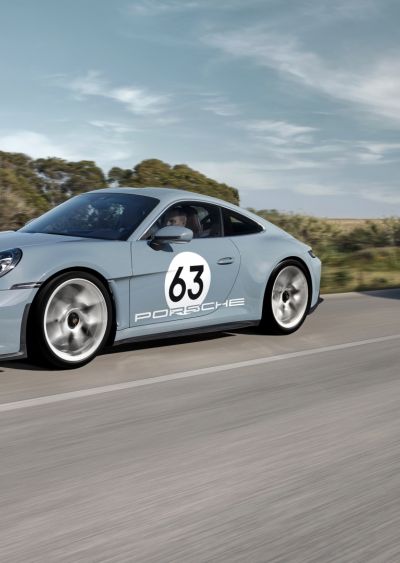Porsche 959 in detail
Development of the 959 started way back in 1981 and it was partially designed to see just how far the evergreen 911 could be developed. Porsche’s chief engineer at the time was Helmuth Bott and he managed to convince managing director Peter Schutz that all-wheel drive could be one way of extending the 911’s bloodline into the future and he set to designing an ultimate 911 that would also adhere to Group B rules.
A prototype, simply known as the Gruppe B, was shown at the 1983 Frankfurt motor show, and while there were glimpses of the contemporary 911 in the Gruppe B – the wheelbase, the roofline, the windows and doors, much of the interior – in truth the new model had little in common with Porsche’s perennial sports car.
The Gruppe B’s bodywork went through further developments – air vents in both the front and rear wheel housings as well as the air intakes in front of the rear wheels were added – and it was in this form that it made its debut as a production car at the 1985 Frankfurt show. Much of the hardware was as per the prototype.
Naturally enough the power plant would be a flat-six, with twin turbos, that was based on the unit used in Porsche’s 935/78 Le Mans racer, aka Moby Dick. Featuring water-cooled cylinder heads and an air-cooled block, its capacity was reduced to 2.85 litres and, to ensure a smooth, lag-free power delivery, equipped with a pair of sequential turbos, with the smaller turbo acting at low revs and both blowing higher up the rev range.
An impressive array of motorsport-inspired hardware such as titanium con rods, forged alloy pistons and Nikasil-lined cylinders helped the unit to produce a claimed 444bhp at 6500rpm. A maximum torque of 369lb ft was developed at a highish 5000rpm, but that all-wheel-drive traction helped it get off the line pretty sharpish – 0-62mph was a claimed 3.7sec and its top speed of 197mph made it the world’s fastest production car. Based on data received from sensors in each wheel, the computer-controlled Porsche-Steuer Kupplung (PSK) system could split torque 50:50 front/rear in slippery conditions, or at the other extreme send up to 80 per cent to the rear wheels under hard acceleration.
Despite its passing resemblance to the 911, the 959’s suspension was different to the run-of-the-mill 911’s, the latter’s MacPherson strut front and semi-trailing-arm rear set-up replaced by double wishbones at each corner, with two electronically adjustable dampers per wheel – one to control the firmness of the ride, the other to adjust the amount of ground clearance (the driver could choose from three settings for each, although the firmest and lowest settings would be selected automatically at speed). The 17-inch wheels were hollow-spoked magnesium alloy items fitted with Dunlop Denloc run-flat tyres – 235/45 VR17 up front and 255/40 VR17 at the rear – and a tyre-pressure monitoring system.
While the 959 might have obviously been derived from the 911 its familiar-looking panels were in different, lighter materials – the doors were aluminium rather than steel, as was the front boot lid, while the rest of the bodywork was Kevlar. Flared arches, linked on each side of the car by wide sill extensions, housed the Gruppe B’s wider track, while a more aerodynamic nose helped reduce drag and an adjustable rear wing controlled downforce.
Despite its high-tech hardware the 959 was pretty easy to drive, the combination of electronically controlled four-wheel drive, adjustable ride height and dampers as well as a twin-turbo motor and six-speed manual no more intimidating than driving a standard 911. And from behind the wheel the cockpit of the 959 didn’t feel all that different from that of its road-going 911 Turbo counterpart, even if the 959 carried a price tag that was three times higher.
While the 959’s interior might have had a reassuringly familiar feel for a Porsche owner, those coming to the brand for the first time might have felt it was a trifle sombre given the whopping price tag. There were no high-tech switches or instrumentation, drivers instead being greeted by a standard set of 911 instruments, albeit with a 340km/h speedo and a rev counter red-lined at 7300rpm hinting at the 959’s performance potential.
And while the 959’s interior might have been a little plain, there was nothing bland about its performance. Zero to 62mph in less than four seconds was pretty staggering back in the late 1980s, and its ability to put those numbers down no matter what the weather was hugely impressive, with the only other performance car of the time coming anywhere close in terms of all-weather usability being the Audi Quattro.
The 959, unlike the rest of the range, wasn’t assembled at Zuffenhausen, but was put together at Karosserie Baur, with Porsche inspectors keeping a close eye on quality control. Just 292 road-going production examples were made, and despite a nigh-on £150k price tag Porsche reputedly lost a similar figure on each example it sold. A loss leader then, but as halo cars go it was deeply impressive and demonstrated there was plenty of life left in the ‘old’ rear-engined 911 format.
Specs
|
Engine |
Flat-six, 2849cc, turbocharged |
| Power | 444bhp @ 6500rpm |
| Torque | 369lb ft @ 5000rpm |
| Weight | 1450kg |
| Power-to-weight | 311bhp/ton |
| 0-62mph | 3.7sec (claimed) |
| Top speed | 317 km/h (claimed) |
| Price |
US$ 225,000 (1987) |
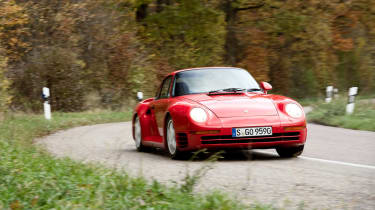

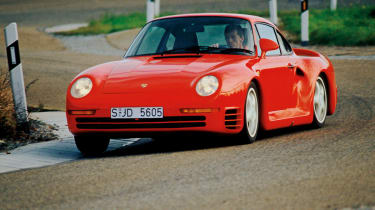
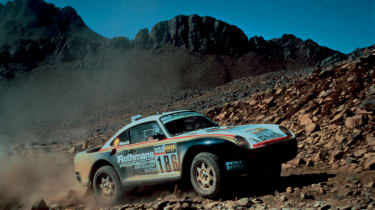
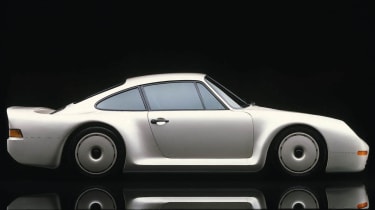
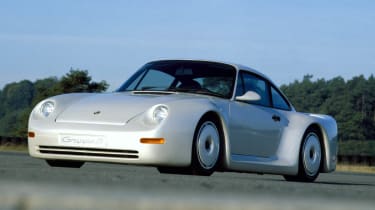
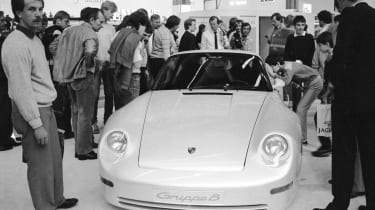
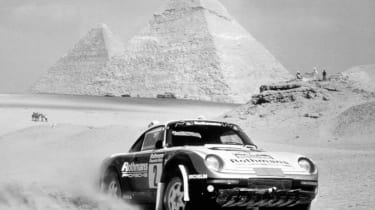
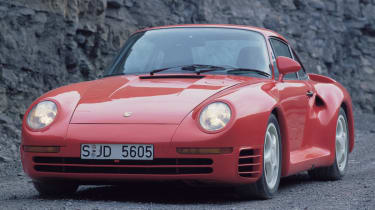
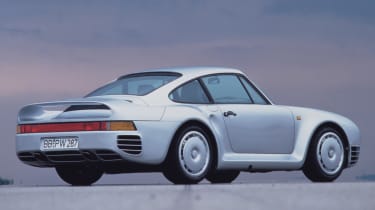
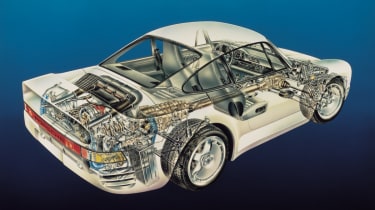
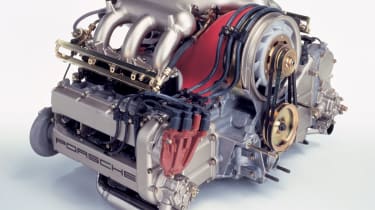
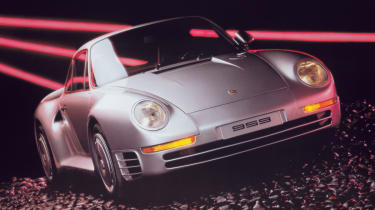
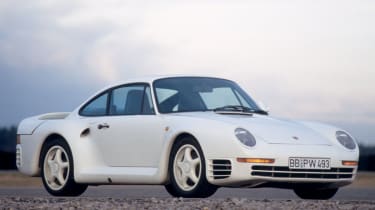
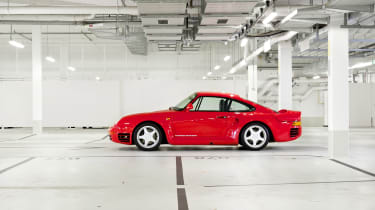
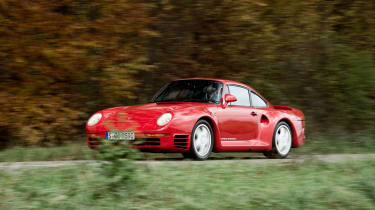
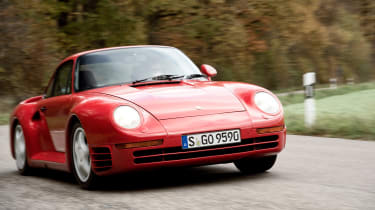
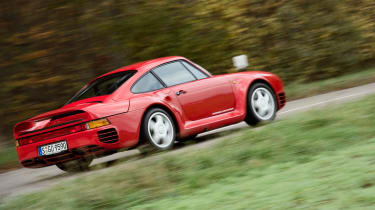
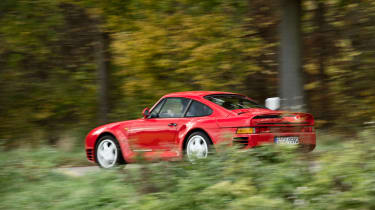
Article republished from: EVO magazine
